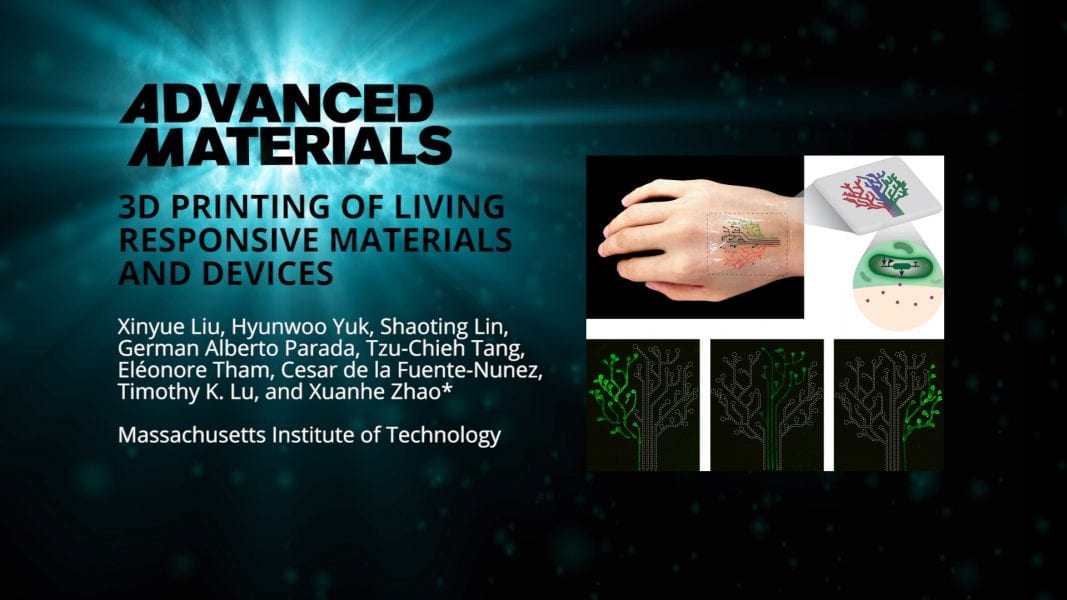A variety of different switches and buttons control the information flow in electronic devices. Genes of a living organism are controlled in a similar way—a specific chemical stimulus turns “on” the production of proteins. In contrast to electronics, living beings can easily respond to chemical stimuli. Imagine the possibilities if living cells could be precisely placed into a 3D network.
In their communication in Advanced Materials, Xuanhe Zhao from the Massachusetts Institute of Technology and his co-workers succeed in generating living materials and devices by 3D printing genetically programmed bacterial cells.
The researchers engineer a range of bacterial cells that can produce green fluorescent protein (GFP) or secrete chemicals in response to four different signaling chemicals that diffuse freely throughout the hydrogel. Bioink containing pluronic F127 diacrylate micelles recovers to a packing state after printing, which is stabilized by UV crosslinking.
Elaborate large-scale structures can be printed with this bioink in high resolution. Even pyramid-like connections of analyte and sensor are easily achieved. Multi-ink 3D printing enables the construction of different logic gates using GFP fluorescence as output, and due to the well-defined spatial distribution of the hydrogel and the time dependence of signal molecule diffusion and GFP production, spatiotemporally controlled patterning is achieved.
The gel, which contains bacteria responsive to N-acyl homoserine lactone (AHL), can be printed in intricate patterns. Connection to AHL-containing gel induces GFP production of the bacteria, which spreads throughout the entire sensor overnight.
A 3D-printed living tattoo constructed by this approach features three different sensors that can endure stretching, compression, and twisting. Application of analytes causes precise local responses only in the respective sensor area.
To learn more about this multi-parameter living bioink toward the development of living devices, please visit the Advanced Materials homepage.

















